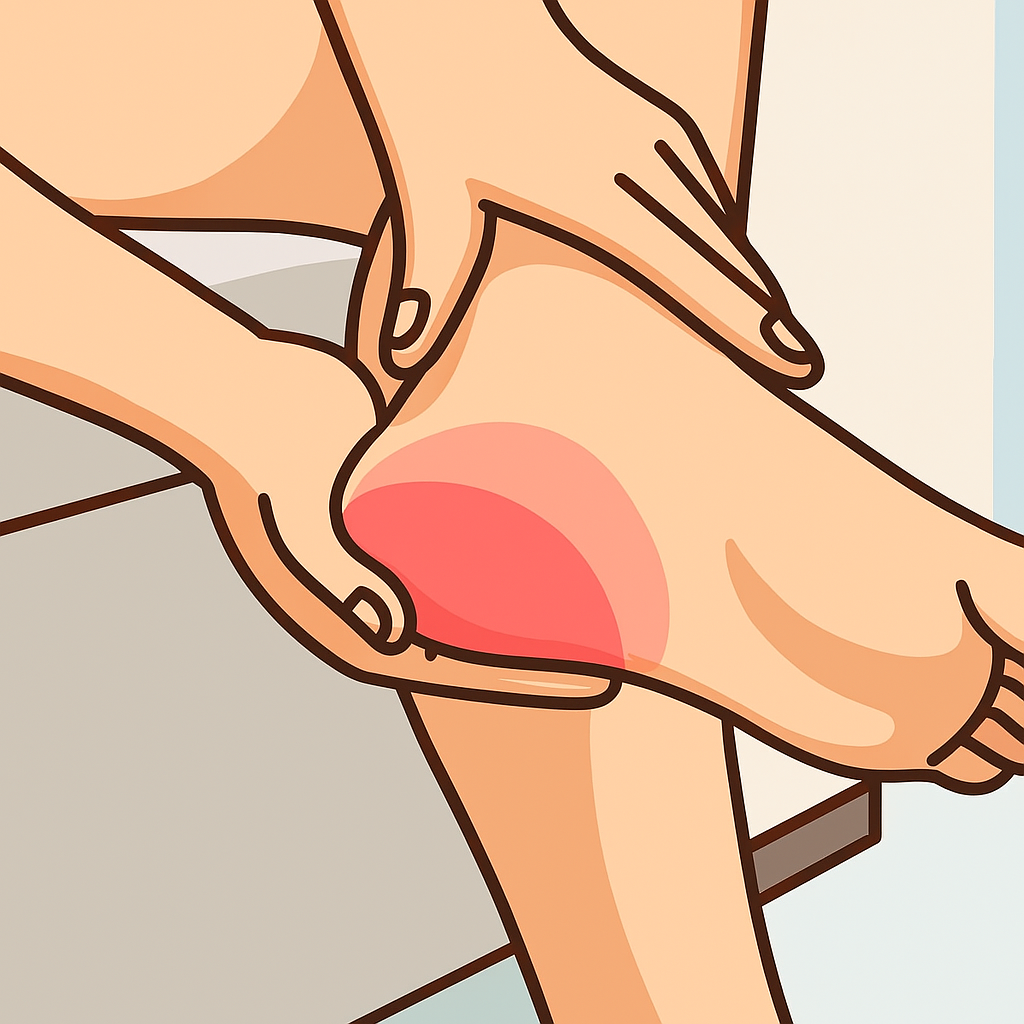
If your high school athlete or weekend warrior is sidelined by stubborn heel or ankle pain near where the Achilles tendon meets the heel bone, you might be dealing with insertional Achilles tendinopathy…a mouthful of a diagnosis, but a common cause of pain in runners, jumpers, and active folks. 🏀⚽🏃
Luckily, a new study offers hope without needing surgery!
🧠 What Is Insertional Achilles Tendinopathy?
Let’s break that down:
- Achilles tendon = the strong band connecting your calf muscles to your heel
- Insertional = the part where it attaches to the heel bone
- Tendinopathy = inflammation, thickening, or pain in the tendon
People with this condition often feel:
- Pain during walking, running, or jumping
- Tenderness at the back of the heel
- A swollen or thickened tendon near the heel bone
- Stiffness first thing in the morning
👟 It’s common in athletes and active adults (especially those who run or do sports on hard surfaces).
📚 What Did the New Study Show?
Researchers compared two types of exercise-based rehab for this injury:
❌ High Tendon Compression Rehab (HTCR)
- Involved deep calf stretches and letting the ankle bend fully (which adds pressure to the sore area)
✅ Low Tendon Compression Rehab (LTCR)
- Avoided deep ankle bending
- Used heel lifts in shoes to reduce strain
- Included calf massage instead of painful stretching
💡 Why Does Compression Matter?
Think of the Achilles tendon like a rope. When you bend the ankle deeply (like stretching or squatting), it can pinch and press the rope against the heel bone. This “squishing” (compression) may make things worse over time, especially if the tendon is already thick and irritated.
The new rehab method (LTCR) focused on:
- Letting the tendon rest from compression
- Slowly building up its strength with smart exercises
- Using heel lifts to keep pressure off the injury
✅ What Were the Results?
🎯 In just 12 weeks:
- Pain and function improved 2x more in the LTCR group than the traditional group
- 94.7% of LTCR patients returned to their favorite sport
- Satisfaction was significantly higher
🎯 At 24 weeks:
- Tendon thickness went down in the LTCR group (a sign of healing)
- Pain during activity was lower
- Athletes could do more reps in strength tests
🔄 The 4 Stages of LTCR Recovery (Explained Simply)
The successful program included:
- Isometric holds
➤ Press and hold positions without movement to gently activate the tendon
(Imagine pressing on a wall and holding for 30 seconds) - Isotonic movements
➤ Slowly lifting and lowering the heel with weights over time - Energy storage & release
➤ Light bouncing, jumping, or hopping movements (only once pain was lower) - Sport-specific training
➤ Running and jumping drills tailored to the person’s sport
📝 Progress only happened when:
- Pain stayed under 5 out of 10
- There was no worsening the next day
- The person stayed in each phase for at least 2 weeks
👟 What Made the Biggest Difference?
The 3 powerful changes in the LTCR plan:
- 👉 Heel lifts: Raised the heel to reduce ankle bend and protect the tendon
- 👉 Massage: Loosened tight calves without painful stretching
- 👉 Ankle angle control: Exercises were done without bending too far forward
👨👩👧 Why Parents Should Care
For teens in sports and adults who like staying active:
- This program helps avoid invasive options like injections or surgery
- It’s safe, home-friendly, and based on cutting-edge science
- Most importantly: It’s tailored to reduce pain without making things worse
🏁 Takeaways for Parents & Athletes
✅ Do’s:
- Use heel lifts in shoes (talk to a PT about size)
- Follow a structured, progressive rehab plan
- Replace painful stretching with massage
- Keep pain during rehab under a 5 out of 10
🚫 Don’ts:
- Avoid deep calf stretches or ankle bending exercises early on
- Don’t rush to surgery, this approach may help you avoid it!
📍 Local Tip:
If you’re in Hillsboro, Beaverton, Forest Grove, or Portland, ask your local sports PT about low compression rehab for Achilles pain. Not all rehab is created equal!
📞 Ready to Get Back to Your Game?
Whether you’re cheering on your teen or getting back to weekend soccer, don’t settle for a “rest and hope” plan or bounce straight to surgery. Ask your physical therapist about low tendon compression rehab today!
🛑 Disclaimer: This blog is for educational purposes only and is not medical advice. Please consult a licensed physical therapist or physician for individual evaluation and treatment.
